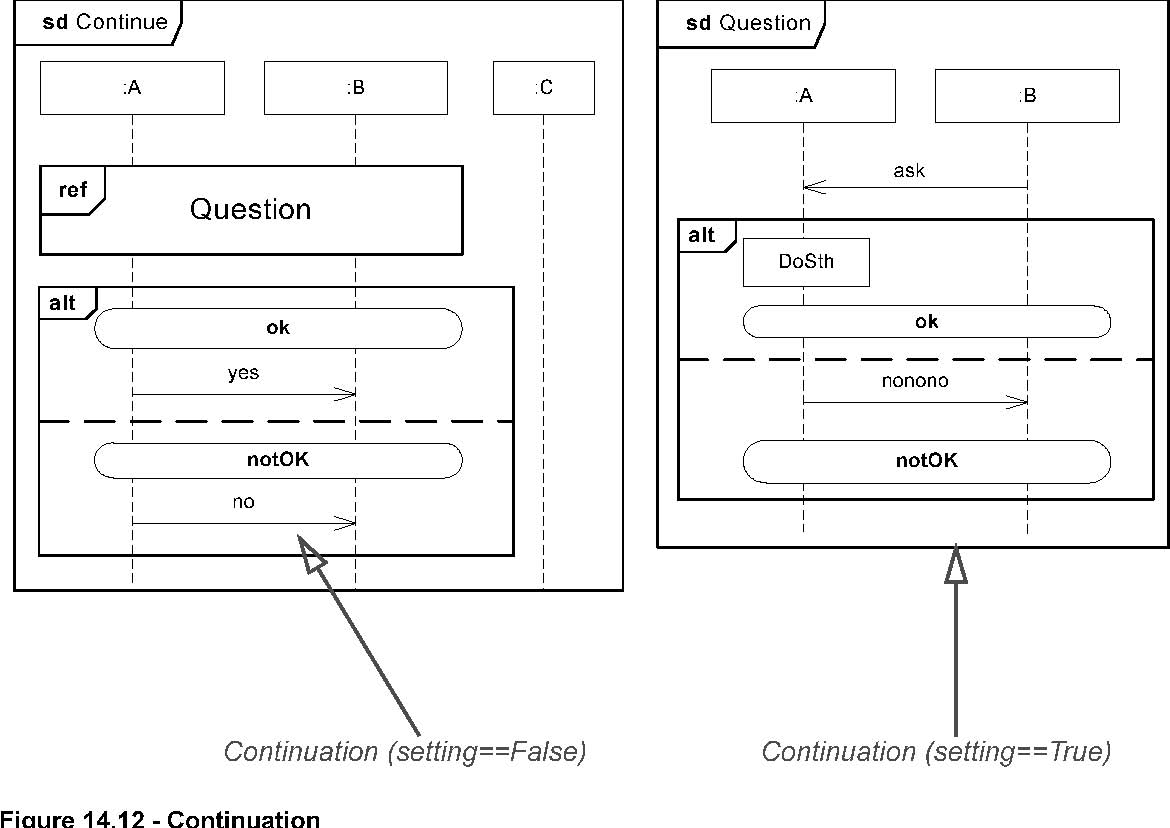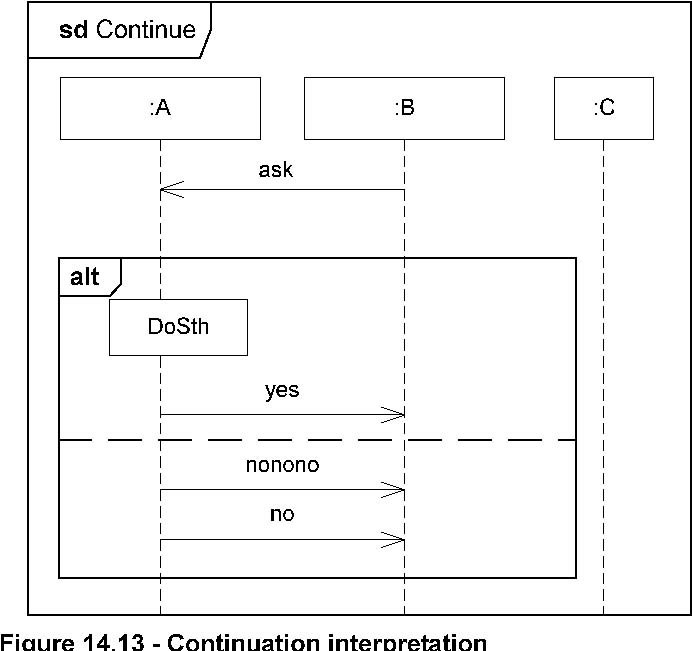*Description
A Continuation is a syntactic way to define continuations of different branches of an Alternative CombinedFragment . Continuation
is intuitively similar to labels representing intermediate points in a flow of control.
Attributes•Constraints |
|||||
| setting : Boolean | True when the Continuation is at the end of the enclosing InteractionFragment and False when it is in the beginning. | ||||
[1] Continuation s with the same name may only cover the same set of Lifeline s (within one Classifier).
[2] Continuation s are always global in the enclosing InteractionFragment (e.g., it always covers all Lifeline s covered by
the enclosing InteractionFragment ).
[3] Continuation s always occur as the very first InteractionFragment or the very last InteractionFragment of the enclosing
InteractionFragment .
Semantics
Continuation s have semantics only in connection with Alternative CombinedFragment s and (weak) sequencing.
If an InteractionOperand of an Alternative CombinedFragment ends in a Continuation with name (say) X, only InteractionFragments
starting with the Continuation X (or no continuation at all) can be appended.
Notation
Continuation s are shown with the same symbol as States, but they may cover more than one Lifeline .
Continuation s may also appear on flowlines of Interaction Overview Diagrams.
Issue 8326 -fix grammar
A continuation that is alone in an InteractionFragment are considered to be at the end of the enclosing InteractionFragment .

Continuation (setting==False) Continuation (setting==True)
The two diagrams
in Figure 14.12 are together equivalent to the diagram
in Figure 14.13.
